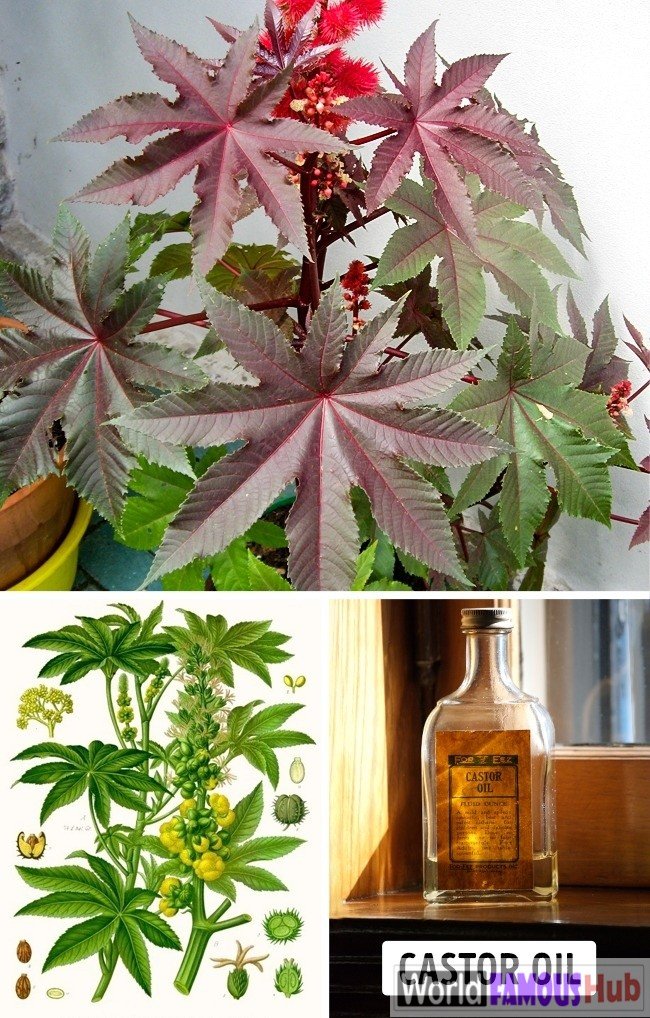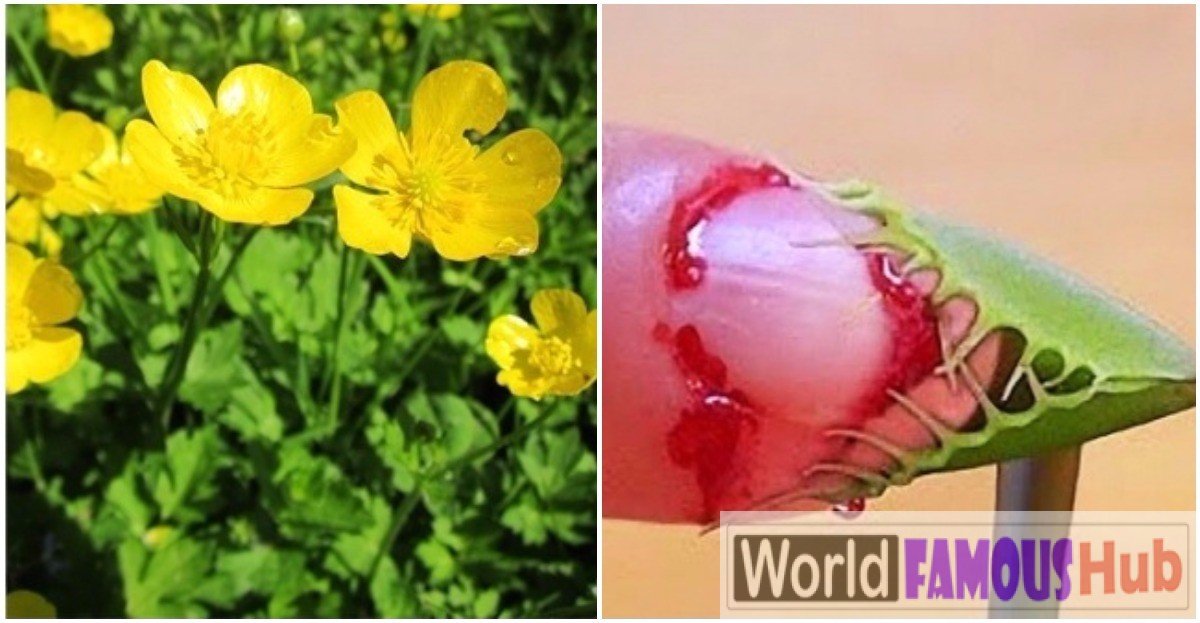Nature is beautiful, but nature can also be cruel.
In the aspect of very beautiful plants , can hide a real poison for humans . While some are toxic , others can be life threatening . If most adults do not necessarily touch plants, or do not take the time to admire nature, children are more likely to be victims of these natural beauties .
Here are 12 dangerous plants that you can find in your garden, ornament in decorations, in nature, but also sometimes in bouquets . Be very vigilant!
1. The gold buttons

(C) Pixabay (C) Chris ~ commonswiki / wikipedia (C) Christian Fischer / wikipedia
Scientific name: Buttercup
Geographical situation : in the temperate zone of the northern hemisphere. This plant prefers moisture or swamps.
Although there are different species of gold buttons, the majority is toxic.
What are the side effects : its caustic sap can cause blisters on the skin. If the plant is ingested or the sap is in contact with the mucous membranes, it can cause inflammation of the larynx and a persistent cough. Putting the sap in contact with the eyes can also cause temporary blindness.
2. Swamp parsley

(C) Anneli Salo / wikipedia (C) Eugen Kohler Franz / wikimedia (C) Olivier Pichard / wikimedia
Scientific name: Cicuta virosa
Location : Europe, Asia and North America. This widespread plant grows in damp places such as swamps and shores.
To be mistaken, the leaves of the parsley of marshes resemble those of the carrots. But it is one of the most dangerous poisonous plants on the planet. There are several species, but they are very difficult to recognize. For more safety, it is better not to touch these plants.
What are the side effects? This plant causes nausea, convulsions and also helps to lower the heart rate. In some cases, it can lead to death. For example, just 100 to 200 grams of parsley root swamps to kill a cow.
3. Elderberry

(C) Jonathan Billinger / wikipedia (C) Lobachev Vladimir / Wikipedia (C) Franz Eugen Kohler / wikipedia
Scientific name : Sambucus
Geographical situation : temperate zone of the northern hemisphere as well as in Australia.
The most common forms of fruit are reds and blacks. But all parts of this plant are poisonous. It is strongly recommended to wash your hands if you touch elderberry. Only ripe berries (black) are harmless and edible. That’s why we often find them in sweets, pies or drinks.
What are the undesirable effects : if it is not wall and therefore black, the elderberry causes headaches, great fatigue, abdominal pain or convulsions. The most vulnerable people may even have heart failure or even respiratory failure.
4. The oleander

(C) Ranko / wikipedia (C) Francisco Manuel Blanco / wikipedia (C) Keith Williamson / wikipedia
Scientific name: Nerium
Geographical situation : Can be found everywhere, but especially in tropical and subtropical regions. It is very often used in France and all over Europe to act as hedges or various landscaping projects. It is also found as a houseplant.
This plant seduces a lot thanks to its pretty flowers, its tenacity and robustness.
What are the side effects? This plant contains cardiac glycosides , which can modify the heart rate of humans. On the other hand, it causes nausea, headaches and fatigue, and even for the most vulnerable (such as children): death. Legend has it that some of Napoleon’s soldiers would have cooked their meat over a fire powered by laurel branches. A number of them have never woken up.
5. The aconit wolf

(C) Rudiger Kratz / wikipedia (C) BioLib.de/wikipedia (C) User: Tigerente / wikipedia
Scientific name: Aconitum
Location : This plant is easily found in Europe, Asia and North America. It is often grown in ornament because it has very beautiful purple, blue or yellow flowers. It can be very tall and always attracts attention because of its beauty.
In the past, aconite was used to poison arrows. Even bees avoid foraging because their pollen can kill them.
What are the undesirable effects : stay away from this plant at all costs, it is very toxic. It causes cardiac arrhythmia, limb numbness, darkens eyesight and sometimes leads to death.
6. The stramony

(C) Nova / Wikipedia (C) Franz Eugen Kohler / wikipedia (C) Lazaregagnidze / wikipedia
Scientific name: Datura stramonium
Geographical location : it is found all over the planet, from North America to Central America, through Europe and southern Russia.
The stramony resembles a tomato root, or even the plant of the potato. She is from the same family. It is easy to notice because it has small fruits that look like thistles. The latter have black seeds and its flowers emit a pleasant fragrance.
What are the side effects? It contains alkaloids which are responsible for palpitations and sometimes lead to a delirious state losing all orientation. The most serious cases can trigger coma or death. Shamans often used this plant during their rituals.
7. Hogweed

(C) Carl Axel Magnus Lindman / Wikipedia (C) Walter J. Pilsak / wikipedia (C) Dcrjsr / wikipedia
Scientific name: Heracleum
Geographical location : it is found in the temperate regions of Europe and Asia, but a species also lives in the United States.
This plant is giant (up to 5 m high). Avoid rubbing yourself or taking souvenir photos nearby.
What are the undesirable effects : some species contain furanocoumarines , causing very painful blisters, moreover if they are exposed to light. If a seed or plant touches a part of the body, it is best to wash it immediately and avoid sun exposure for about 48 hours.
8. The spurge

(C) Niklitov / wikipedia (C) Dinkum / wikipedia (C) H. Zell / wikipedia
Scientific name: Euphorbia
Location : It is everywhere, sometimes even in gardens and houses.
The peculiarity of this plant is that it comes in several species. Indeed, it can take the form of a cactus, as a green plant or a plant with yellow flowers. Keep your children away and teach them to be wary of plants and flowers, especially those by which they are naturally attracted.
What are the undesirable effects : the sap causes inflammation of the skin and blisters. The result is vomiting, swelling and fever.
9. Rhubarb

(C) Dr.Cosmos / wikipedia (C) Dieter Weber / wikipedia (C) Florilegius / amanaimages
Scientific name: Rheum rhabarbarum
Location : It is cultivated in Europe, Russia and the United States. It is widely used in cooking to make pies or jam. Some people even like to nibble raw or salad stems.
What are the unwanted effects: While many people eat rhubarb, most are not aware that the leaves and the root are toxic. Indeed, they contain a large amount of oxalic acid , responsible for burns in the throat and eyes, but also kidney stones, nausea and diarrhea.
10. The belladonna

(C) Otto Wilhelm Thome Flora von Deutschland / wikipedia (C) Kurt Stuber / wikipedia (C) Science Museum / wikipedia
Scientific name: Atropa belladonna
Geographic location : Belladonna is found mainly in North Africa, Europe, southern Russia, Asia Minor and parts of North America.
It looks like a small bush with black berries and pink flowers. It contains atropine, causing pupils to dilate . Many women in the Middle Ages used drops of belladonna to have pretty eyes. These same drops are now used for eye surgery.
What are the side effects? This slow poison causes palpitations as well as dryness and burns in the mouth if ingested. Be careful with children because belladonna can cause headaches, very painful cramps and death.
11. The castor

(C) Dezidor / wikipedia (C) Eugen Kohler Franz / wikipedia (C) Pete Markham / wikipedia
Scientific name: Ricinus communis
Geographical situation : Castor is mainly found in tropical, subtropical and temperate zones. Because of its aestheticism, we find this plant in homes, as an ornament.
Castor is grown to extract castor oil. Heat treatment destroys all toxic elements.
What are the side effects? This plant is probably one of the most dangerous in the world. Most of its compounds are toxic, such as ricin and ricinin.
The seeds are the most dangerous. Ingesting it can lead to death . Before that, irreparable damage can be identified, such as the destruction of body tissues.
12. The Venus fly catcher

Although this plant is not able to kill you, does not it remind you of a certain horror movie?
Photo credit: Kluna Tik / Youtube.com








